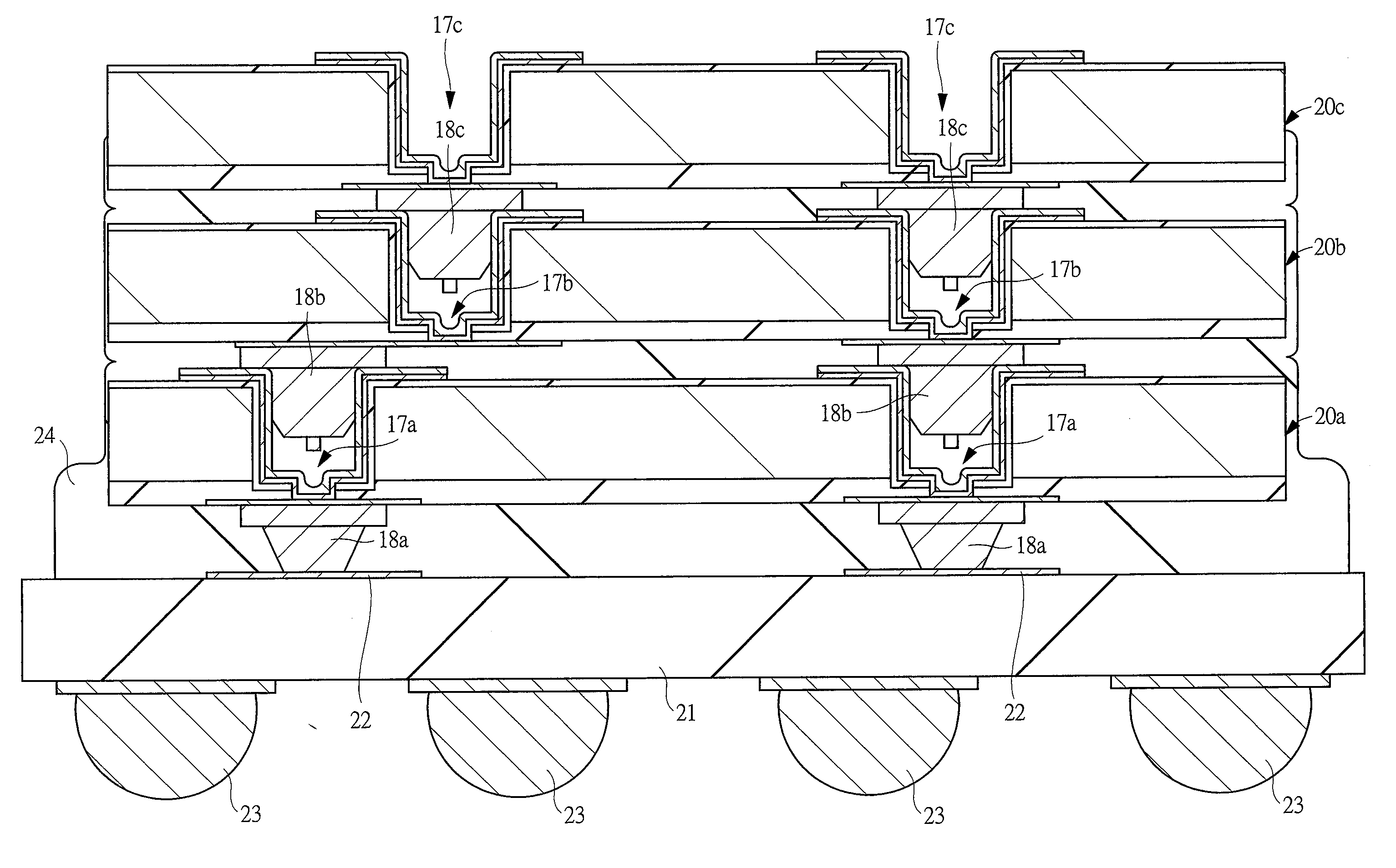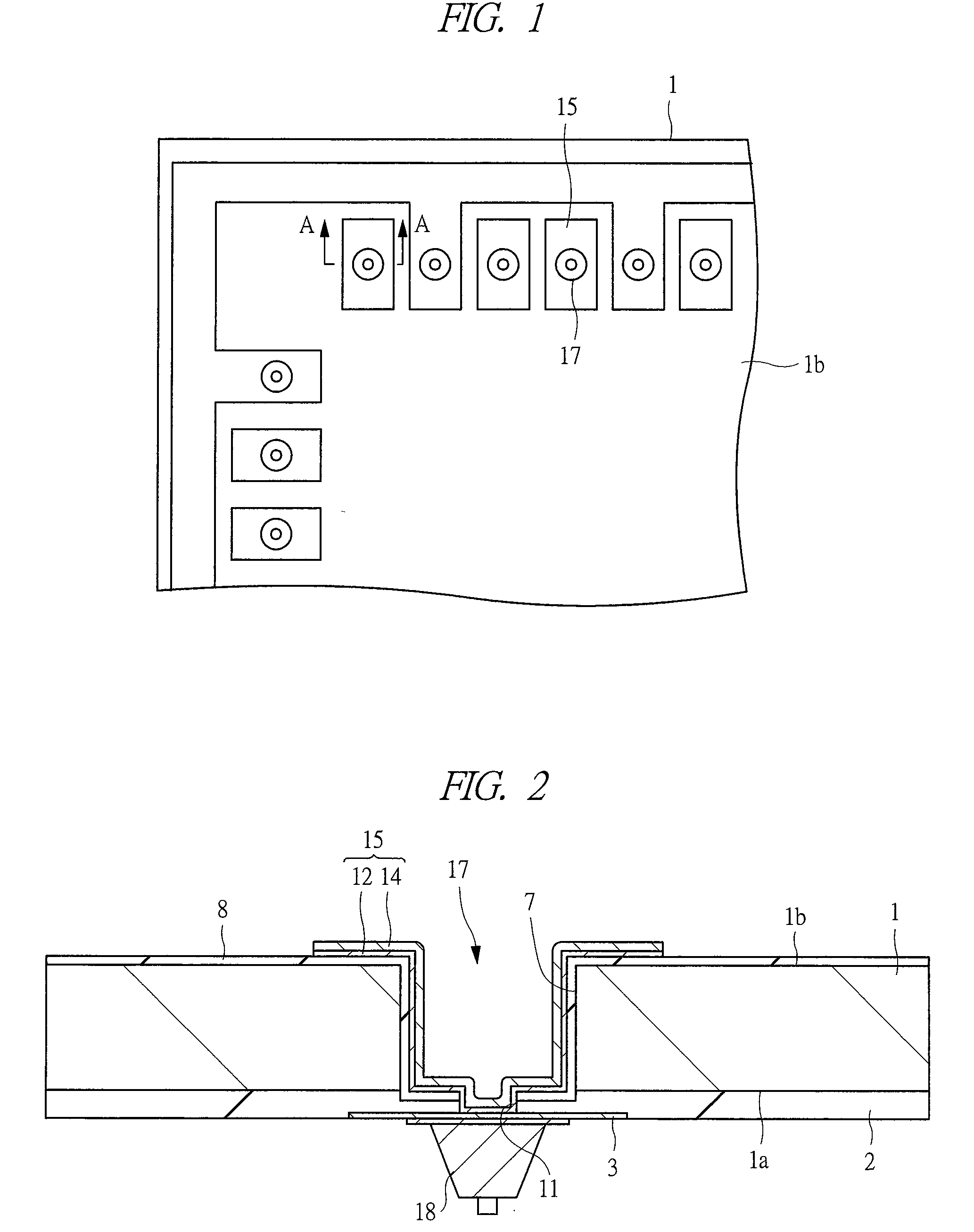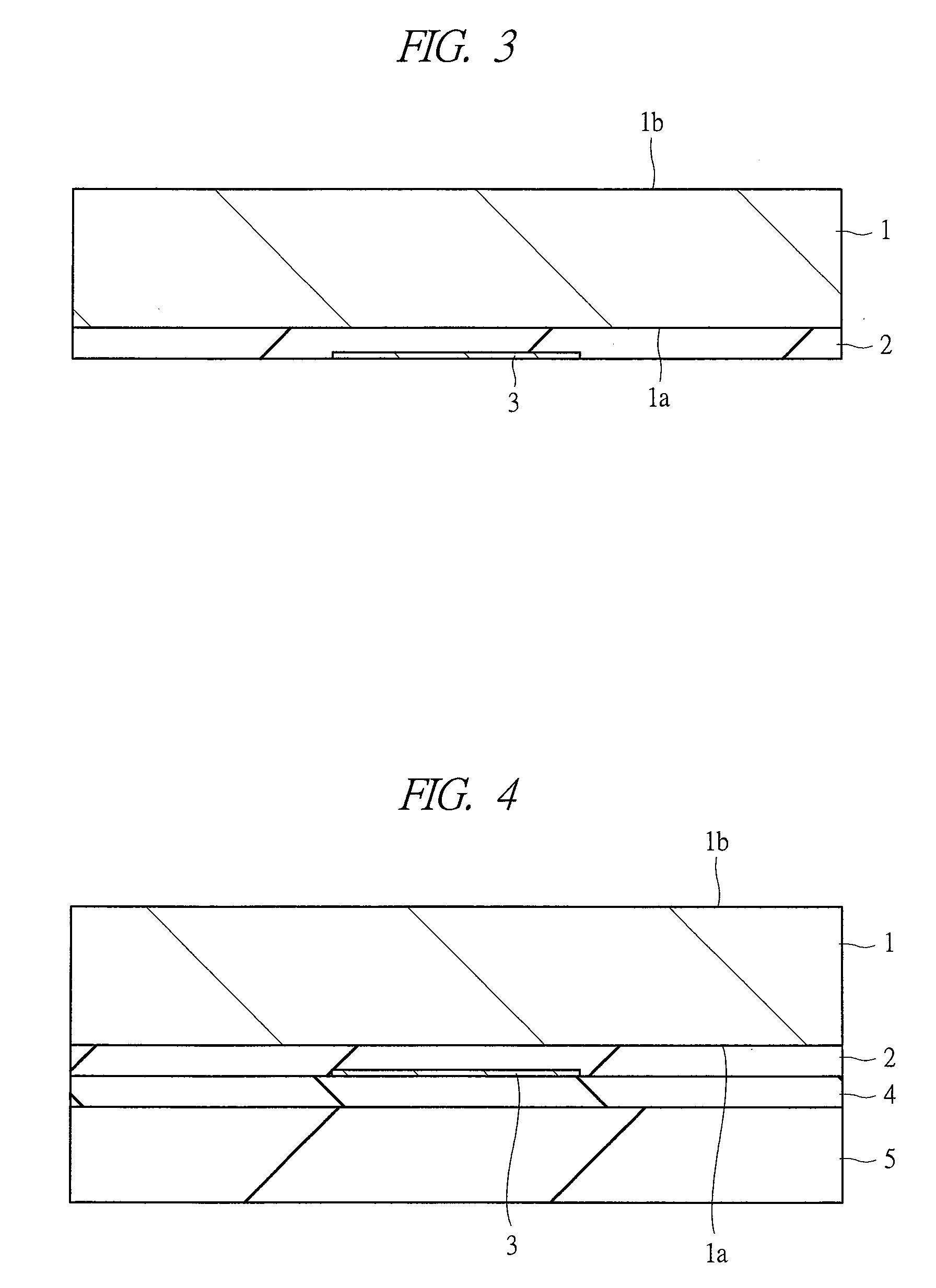Manufacturing process and structure of through silicon via
a manufacturing process and silicon via technology, applied in the direction of semiconductor devices, semiconductor/solid-state device details, electrical apparatus, etc., can solve the problems of deteriorating yield, increasing the inductance between wirings, and difficult high-speed transmission
- Summary
- Abstract
- Description
- Claims
- Application Information
AI Technical Summary
Benefits of technology
Problems solved by technology
Method used
Image
Examples
first embodiment
[0071]In the first embodiment, the description will be made with reference to the drawings with using a semiconductor device in which a highly integrated circuit is mounted like a microcomputer chip as an example.
[0072]FIG. 1 is a plan view showing a semiconductor chip according to the first embodiment. FIG. 1 is a drawing showing a part of a semiconductor chip on a side of a second surface (rear surface) 1b of a semiconductor substrate 1 seen from above. As shown in FIG. 1, the semiconductor chip is constituted of the semiconductor substrate 1 of a rectangular shape, and a plurality of through silicon vias 17 are formed in the second surface 1b of the semiconductor substrate 1. Also, the plurality of through silicon vias 17 are connected to wirings formed of a conductive film 15, and a wiring pattern is formed by these wirings on the second surface 1b of the semiconductor substrate 1. As mentioned above, in the first embodiment, the plurality of through silicon vias 17 are formed i...
second embodiment
[0129]Although the semiconductor chip in which a highly integrated circuit is formed like a microcomputer chip has been described in the first embodiment, a semiconductor chip for performing the rewiring like an interposer chip will be described in the second embodiment.
[0130]For example, when a plurality of semiconductor chips are three-dimensionally stacked, a stud bump electrode formed in a semiconductor chip disposed above is deformed and inserted into a through silicon via formed in a semiconductor chip disposed below, thereby electrically connecting the upper and lower semiconductor chips. At this time, respectively different integrated circuits are formed in the semiconductor chip disposed above and the semiconductor chip disposed below, and they have different functions in many cases. Thus, the upper and lower semiconductor chips have different layout patterns, respectively. Accordingly, the position of the through silicon via of the semiconductor chip disposed below and the...
third embodiment
[0137]Although an example of using the insulating film 8 has been described in the first embodiment, an example of using a photosensitive insulating film instead of the insulating film 8 will be described in the third embodiment. The manufacturing method of a semiconductor chip in the third embodiment will be described below.
[0138]By performing the process shown from FIG. 3 to FIG. 7, the first hole 7 which reaches the interlayer insulating film 2 from the second surface 1b of the semiconductor substrate 1 is formed. Then, as shown in FIG. 38, after removing the resist film 6, the interlayer insulating film 2 exposed on the bottom surface of the first hole 7 is etched to the middle with using the semiconductor substrate 1 made of silicon and the first hole 7 formed in the semiconductor substrate 1 as a mask.
[0139]Then, as shown in FIG. 39, a photosensitive insulating film 8a is formed on the second surface 1b of the semiconductor substrate 1 including the inside of the first hole 7....
PUM
 Login to View More
Login to View More Abstract
Description
Claims
Application Information
 Login to View More
Login to View More - R&D
- Intellectual Property
- Life Sciences
- Materials
- Tech Scout
- Unparalleled Data Quality
- Higher Quality Content
- 60% Fewer Hallucinations
Browse by: Latest US Patents, China's latest patents, Technical Efficacy Thesaurus, Application Domain, Technology Topic, Popular Technical Reports.
© 2025 PatSnap. All rights reserved.Legal|Privacy policy|Modern Slavery Act Transparency Statement|Sitemap|About US| Contact US: help@patsnap.com



